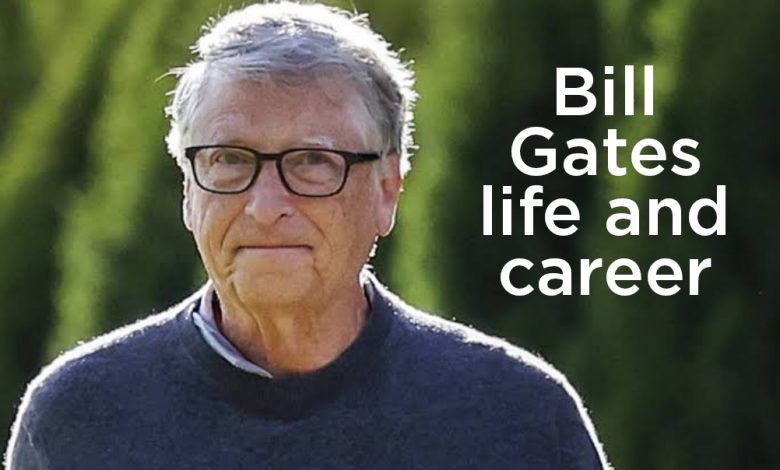Bill Gates: The Visionary Who Revolutionized Computing
Bill Gates life and career

Bill Gates is a name synonymous with technological innovation, entrepreneurial success, and philanthropic endeavors. As the co-founder of Microsoft, he played a pivotal role in shaping the personal computer revolution and transforming how we interact with technology. His journey from a young computer enthusiast to one of the world’s wealthiest individuals and most generous philanthropists is a testament to the power of vision, hard work, and adaptability.
Early Life and Education
William Henry Gates III was born on October 28, 1955, in Seattle, Washington. The second of three children, Gates grew up in an upper-middle-class family with a supportive and competitive atmosphere. His father, William H. Gates Sr., was a prominent lawyer, while his mother, Mary Maxwell Gates, served on the board of directors for First Interstate BancSystem and the United Way of America.
From an early age, Gates showed an intense interest in computers and programming. At 13, he enrolled at the private Lakeside School, where he was introduced to computers. It was here that Gates met Paul Allen, who would later become his business partner. The two quickly bonded over their shared passion for computer programming.
Gates’ academic prowess was evident early on. He excelled in mathematics and science, and by the age of 17, he had already sold his first computer program – a timetabling system for his high school, earning $4,200.
The Birth of Microsoft
In 1973, Gates enrolled at Harvard University. However, his time at Harvard was short-lived. In 1975, after reading about the Altair 8800 microcomputer in Popular Electronics magazine, Gates and Allen saw an opportunity. They contacted Micro Instrumentation and Telemetry Systems (MITS), the makers of the Altair, claiming they had developed a BASIC interpreter for the platform. In reality, they hadn’t even started, but MITS expressed interest.
Gates dropped out of Harvard to work on the project with Allen. They completed the interpreter, which worked perfectly, and MITS agreed to distribute it. This success led Gates and Allen to found Microsoft (initially Micro-Soft) in Albuquerque, New Mexico, in 1975.
Key Milestones in Microsoft’s Early Years:
- 1980: Microsoft partners with IBM to provide the operating system for their personal computers
- 1981: MS-DOS is released, becoming the standard operating system for personal computers
- 1985: Microsoft Windows is introduced, revolutionizing the user interface for personal computers
- 1986: Microsoft goes public, with shares priced at $21
The Rise of a Tech Giant
Under Gates’ leadership, Microsoft grew from a small start-up to a global technology powerhouse. The company’s success was built on a series of strategic decisions and innovations:
Windows Operating System
While MS-DOS was successful, it was the introduction of Windows that truly catapulted Microsoft to dominance. The graphical user interface made computers more accessible to the average user, leading to widespread adoption.
Office Suite
Microsoft Office, including programs like Word, Excel, and PowerPoint, became the standard for productivity software in both personal and business settings.
Internet Explorer
As the internet gained popularity, Microsoft leveraged its dominant position in operating systems to push Internet Explorer, quickly gaining a large market share in web browsers.
Xbox
Recognizing the growing importance of gaming, Microsoft entered the console market with Xbox in 2001, successfully competing with industry giants like Sony and Nintendo.
Leadership Style and Business Philosophy
Gates was known for his intense work ethic and competitive drive. He fostered a culture of excellence and innovation at Microsoft, often pushing employees to their limits. His leadership style was characterized by:
- A focus on hiring the brightest minds
- Encouraging healthy competition within the company
- A hands-on approach to product development
- A strong emphasis on forward-thinking and anticipating market trends
Gates’ business acumen was not limited to technology. He understood the importance of partnerships, strategic acquisitions, and protecting intellectual property. These strategies helped Microsoft maintain its dominant position in the tech industry for decades.
Philanthropy and Later Career
In 2000, Gates and his wife Melinda established the Bill & Melinda Gates Foundation, which would become the world’s largest private foundation. The foundation focuses on global issues that are often overlooked, including:
- Enhancing healthcare and reducing extreme poverty globally
- Expanding educational opportunities and access to information technology in the U.S.
- Funding agricultural development to support small farmers in developing countries
In 2006, Gates transitioned out of his day-to-day role at Microsoft to focus more on his philanthropic efforts. He remained as chairman of the board until 2014 and continues to serve as a technology advisor to the company.
Legacy and Impact
Bill Gates’ impact on the world of technology and beyond is immeasurable. His vision of “a computer on every desk and in every home” seemed far-fetched in the 1970s but became a reality largely due to Microsoft’s efforts. Some key aspects of his legacy include:
- Democratizing personal computing, making it accessible to millions worldwide
- Revolutionizing business practices through productivity software
- Setting new standards for entrepreneurship and corporate leadership
- Pioneering large-scale, data-driven philanthropy
Gates’ approach to philanthropy has been particularly influential. He has encouraged other wealthy individuals to pledge the majority of their wealth to charitable causes through The Giving Pledge, which he co-founded with Warren Buffett.
Challenges and Controversies
Despite his numerous achievements, Gates’ career has not been without controversy. Microsoft faced antitrust lawsuits in the 1990s, with accusations of monopolistic practices. The company’s aggressive business tactics during this period drew criticism from competitors and regulators alike.
In recent years, Gates has also faced personal controversies, including scrutiny over his relationship with Jeffrey Epstein and allegations of workplace misconduct. These issues have led to increased media attention and public debate about his legacy.
Conclusion
Bill Gates’ life and career represent a remarkable journey of innovation, business acumen, and philanthropy. From a young computer enthusiast to a tech mogul and now a global philanthropist, Gates has consistently demonstrated the ability to identify opportunities, build successful organizations, and tackle complex global challenges.
His story is not just about personal success but also about the transformative power of technology and the responsibility that comes with wealth and influence. As he continues his philanthropic work, Bill Gates remains a significant figure in shaping our world, leaving a legacy that extends far beyond the realm of personal computing.
